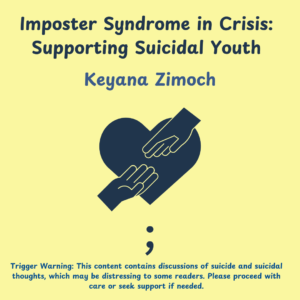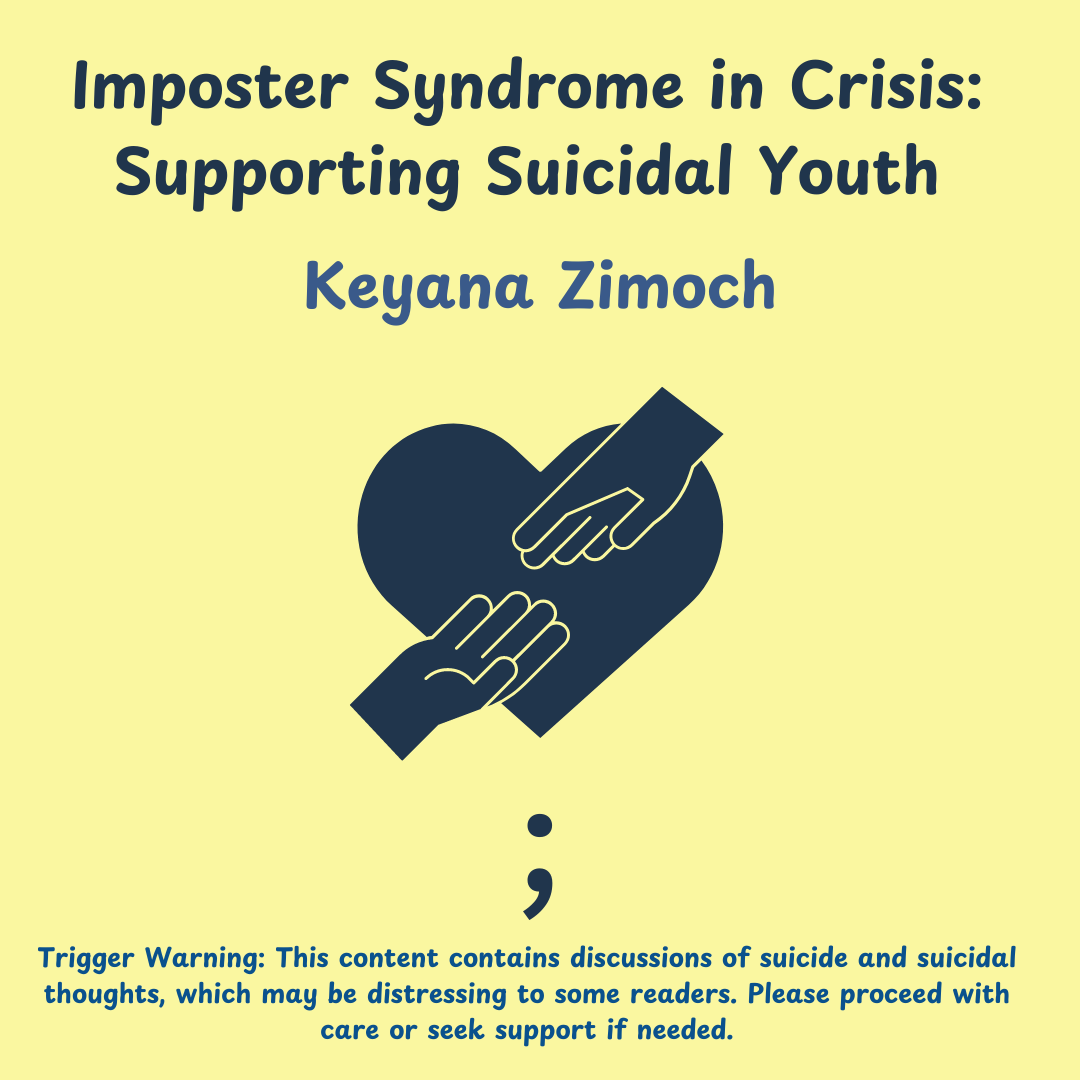Imposter Syndrome in Crisis: Supporting Suicidal Youth 
Choosing Social Services: Preparing
Entering the social service field as a recent graduate, I was eager to make a difference but wished to avoid the stress and burnout associated with crisis work. I successfully completed several mental health courses, including Initial Crisis Intervention Training, Suicide Intervention Skills Training, and Mental Health First Aid Training; as such, I believed I was well-equipped to handle a client disclosing a suicide plan. Despite this, I chose to start my career in employment services, finding suicidality to be the most daunting aspect of mental health care.
As prepared as I felt, I hoped I would never have to put that training into practice.
I was wrong.
Supporting Suicidal Youth for the First Time: Panic
The first time a client said: “I plan to kill myself”, I panicked. Suddenly, all my training vanished and my imposter syndrome surged. I did not know what to say – I worried if I said the wrong thing I might escalate the youth’s feelings of despair. I couldn’t refer to my notes and defaulting to another professional – because I was the professional, and it was my job to handle this. The notion that someone’s life was “in my hands” was overwhelming.
I took the necessary actions, determining if the youth had the means and a timeline to execute their plan. I spoke honestly, inquiring about any self-harm that required medical attention and offering for the youth to listen to my 911 call. When the paramedics arrived, and we walked to the ambulance together. This interaction replayed in my mind for weeks.
I am not sure that any training could have prepared me for this.
Supporting Suicidal Youth: Progress
Now that I’ve been in my role for a while, I don’t hesitate to ask, “Are you thinking about suicide?”. I feel capable of assessing the risk of suicide and how to make a safety plan.
What changed?
- I abandoned the idea that I needed to suppress my emotions and manage situations alone, returning to the best practice of debriefing with a trusted colleague.
- I often reminded myself that clients are resilient; they had been managing mental health challenges long before I was aware of them.
- I had more exposure supporting youth with suicidal ideation.
Many things have not changed as I work through the challenges of crisis management. Sometimes I wonder if my strong feelings in reaction to suicidality clouds my judgment. I wonder if I become hypervigilant, constantly considering if I am over- or underreacting to the situation.
Many of my struggles stem from thoughts fueled by fear and insecurity: What if I am doing the wrong thing? What if I am making it worse? And the all-encompassing thought: I am responsible for whatever happens next in the client’s life. Luckily, these voices are not as loud as they once were, but there is no denying their presence.
I believe my journey in supporting suicidal youth comes down to acknowledging theory versus reality. I understand the theory of how to manage suicidality, however, I still never feel fully prepared when immersed in the reality of it.
Feeling Fear and Familiarity: Moving Forward 
Becoming familiar with and responsive to a client’s behavior changes does not diminish the underlying fear and pressure that leads workers to question if there is more going on. I would rather react to each individual authentically, and with immense gravity than detach and approach the topic with indifference.
Maybe feeling emotionally charged and invested is okay because I am a human before I am a professional; it means that I care, and that the notion of death is scary.
As I reflect on overcoming my imposter syndrome in supporting suicidal youth, I look forward to how years of experience will shape my perspective, build emotional resiliency, and help me feel more confident, even if I’m not fully comfortable.








